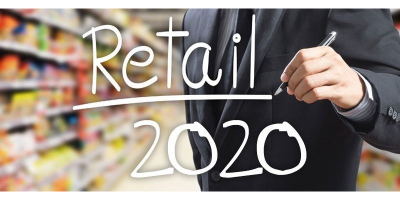Quick moving purchaser merchandise (FMCG) segment is the fourth biggest part in the Indian economy with Household and Personal Care representing 50 for each penny of FMCG deals in India. Developing mindfulness, less demanding access and changing ways of life have been the key development drivers for the part. The urban portion (represents an income offer of around 40 for every penny) is the biggest supporter of the general income produced by the FMCG division in India and recorded a market size of around US$ 29.4 billion out of 2016-17. Nonetheless, over the most recent couple of years, the FMCG showcase has developed at a speedier pace in rustic India contrasted and urban India. Semi-urban and rustic fragments are developing at a quick pace and FMCG items represent 50 for each penny of aggregate provincial spending.
Market Size
The Retail showcase in India is assessed to achieve US$ 1.1 trillion by 2020 from US$ 672 billion of every 2016, with present day exchange anticipated that would develop at 20 for every penny – 25 for each penny for each annum, which is probably going to help incomes of FMCG organizations. In 2016-17, income for FMCG part have achieved US$ 49 billion and is required to develop at 9-9.5 for each penny in FY18 upheld by desires for the aggregate utilization consumption coming to about US$ 3,600 billion by 2020 from US$ 1,469 billion of every 2015. Coordinate offering division in India is required to achieve Rs 159.3 billion (US$ 2.5 billion) by 2021, if furnished with a favourable situation through changes and regulation.#
Ventures/Developments
The administration has permitted 100 for each penny Foreign Direct Investment (FDI) in sustenance preparing and single-mark retail and 51 for every penny in multi-mark retail. This would reinforce work and supply chains, and furthermore give high perceivability to FMCG marks in composed retail showcases, supporting buyer spending and empowering more item dispatches. The part saw sound FDI inflows of US$ 13.07 billion, amid April 2000 to December 2017. A portion of the ongoing advancements in the FMCG segment are as per the following:
The Hershey Co intends to contribute US$ 50 million throughout the following five years in India, its quickest developing center market outside of US.
As a piece of its Rs 25,000 crore (US$ 3.88 billion) venture bundle, ITC will contribute Rs 10,000 crore (US$ 1.55 billion) to grow its nourishment handling portion.
The packaging arm of Coca-Cola India, Hindustan Coca-Cola Beverages (HCCB) is intending to build its retail reach by one million new outlets and is focusing on an income of US$ 2.5 billion by 2020.
Future Retail will procure Hyper City, which is possessed by Shoppers Stop for Rs 911 crore (US$ 139.7 million) to additionally merge its business and have a superior balance in the hypermarket fragment.
Government activities
A portion of the real activities taken by the administration to advance the FMCG segment in India are as per the following:
In the Union Budget 2017-18, the Government of India has proposed to spend more on the rustic favor a plan to twofold the rancher’s salary in five years; and in addition the cut in pay impose rate focusing on basically the little citizens, center around reasonable lodging and framework improvement will give various development drivers to the customer advertise industry.
The Government of India’s choice to permit 100 for each penny Foreign Direct Investment (FDI) in online retail of products and ventures through the programmed course has given clearness on the current organizations of internet business organizations working in India.
With the interest for gifted work developing among Indian businesses, the administration intends to prepare 500 million individuals by 2022 and is likewise reassuring private players and business visionaries to put resources into the wander. Numerous administrations, corporate and instructive associations are working towards giving preparing and training to make a gifted workforce.
The Government of India has drafted another Consumer Protection Bill with exceptional accentuation on setting up a broad instrument to guarantee basic, expedient, available, reasonable and opportune conveyance of equity to purchasers.
The Goods and Services Tax (GST) is valuable for the FMCG business the same number of the FMCG items, for example, Soap, Toothpaste and Hair oil presently go under 18 for each penny charge section against the past 23-24 for every penny rate.
Road Ahead
Country utilization has expanded, driven by a mix of expanding salaries and higher goal levels; there is an expanded interest for marked items in provincial India. The provincial FMCG showcase in India is relied upon to develop at a CAGR of 14.6 for each penny, and achieve US$ 220 billion by 2025 from US$ 29.4 billion of every 2016.
Then again, with the offer of disorderly market in the FMCG part falling, the sorted out area development is required to ascend with expanded level of brand awareness, additionally increased by the development in present day retail.
Another central point moving the interest for sustenance benefits in India is the developing youth populace, principally in the nation’s urban districts. India has a huge base of youthful shoppers who frame most of the workforce and, because of time requirements, scarcely get time for cooking.
Online entryways are relied upon to assume a key part for organizations attempting to enter the hinterlands. The Internet has contributed bigly, encouraging a less expensive and more advantageous intends to expand an organization’s span. It is assessed that 40 for each penny of all FMCG buys in India will be online by 2020, in this manner making it a US$ 5-6 billion business opportunity. Continuously 2025, web based business will contribute around 10-15 for each penny offers of couple of classifications in the FMCG sector*.

